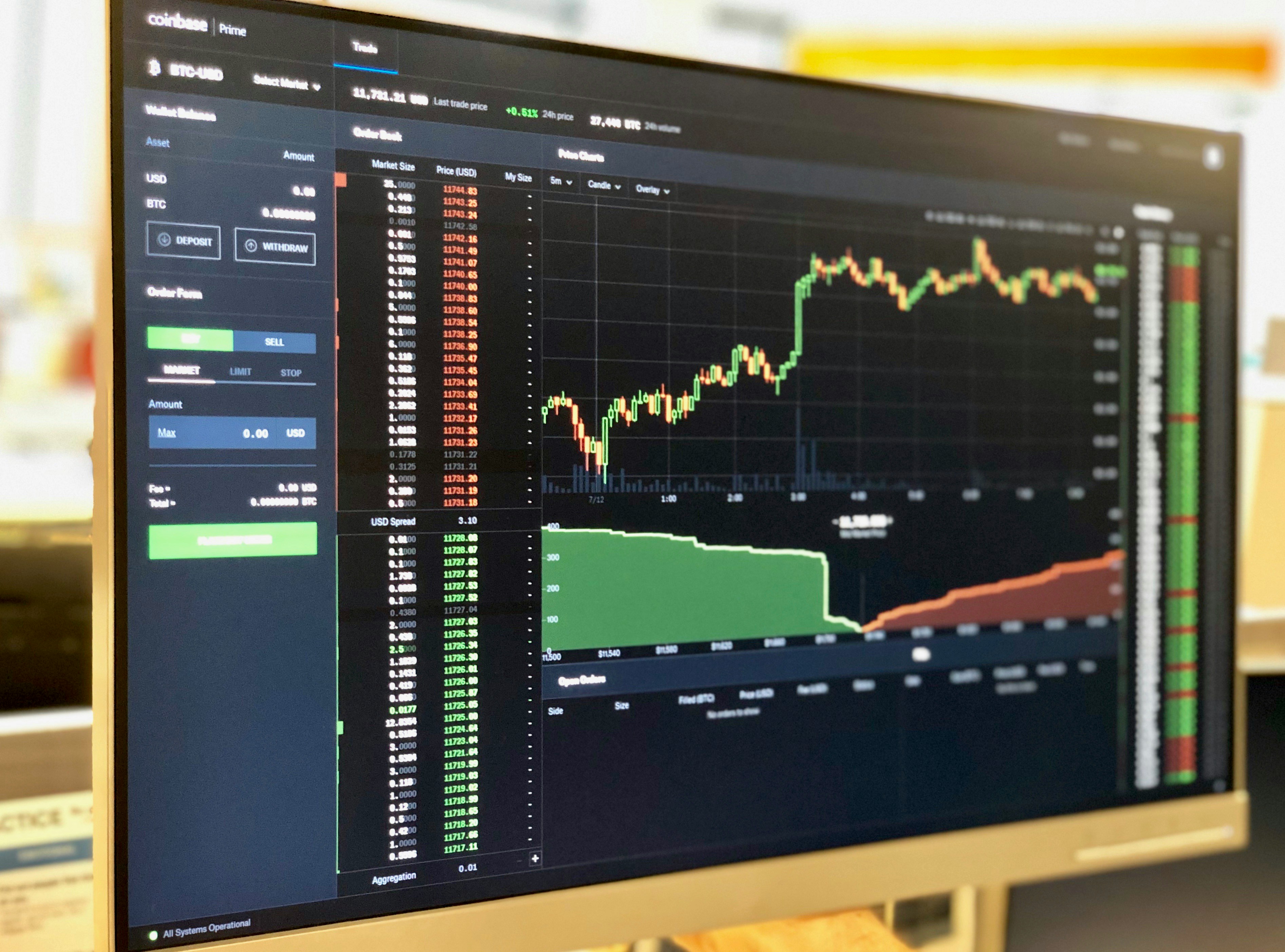
Introduction to Bitcoin Price Predictions
Bitcoin has established itself as a pioneering force within the cryptocurrency market since its inception in 2009. Often referred to as digital gold, it serves not only as a peer-to-peer currency but also as a store of value and an investment vehicle. With its decentralized nature and limited supply, Bitcoin has drawn considerable attention from investors, financial institutions, and even governments. Consequently, an understanding of bitcoin price prediction has become increasingly relevant for those looking to participate in this volatile yet lucrative space.
The significance of price prediction in the realm of Bitcoin cannot be overstated. Market participants rely on forecasts to make informed decisions about when to buy, hold, or sell their assets. As investors strive to maximize returns and minimize losses, accurate assessments of future price movements become essential. Furthermore, the rapidly changing landscape of the cryptocurrency market necessitates continuous analysis and adaptation of strategies to ensure optimal outcomes.
Market analysis plays a critical role in formulating bitcoin price predictions. Analysts often utilize a combination of technical analysis, which examines price charts and market trends, and fundamental analysis, which considers factors such as network activity, regulatory news, and macroeconomic indicators. Additionally, historical data serves as a cornerstone for forecasting, providing insights into past price behavior that can inform future expectations. By examining trends and patterns from earlier market cycles, investors can gain valuable perspectives that aid in crafting their investment strategies.
In conclusion, as Bitcoin continues to gain traction globally, the importance of accurate price predictions cannot be overlooked. Understanding the dynamics at play and the methodologies used to analyze them will be essential for anyone looking to navigate the complexities of this digital currency.
Current State of Bitcoin Prices
As of October 2023, the performance of Bitcoin has been noteworthy, reflecting both volatility and resilience in an evolving market. Currently, Bitcoin is trading within a dynamic range, with prices fluctuating significantly over recent months. In September 2023, the coin experienced a surge, reaching a price point that some analysts attributed to increased adoption among institutional investors and notable buy-ins from retail traders. This upswing, however, was accompanied by periods of correction, leading to ongoing debates about Bitcoin’s intrinsic value and future trajectory.
Market sentiment surrounding Bitcoin has exhibited a mixture of optimism and caution. On one hand, bullish sentiments prevail amongst investors encouraged by technological advancements and growing acceptance of cryptocurrencies as mainstream financial instruments. On the other hand, bearish sentiments remain, primarily due to regulatory concerns and macroeconomic factors that influence investor behavior. These components create a complex environment for Bitcoin price prediction models being discussed by analysts and enthusiasts alike.
In terms of historical data, Bitcoin has shown patterns of recovery following downturns, though it has not been immune to sharp declines. For instance, spikes in trading volume often accompany substantial price changes, indicating a strong interest from market participants. Additionally, various technical indicators suggest that Bitcoin’s current price movements are significant for establishing support and resistance levels. Investors are advised to carefully analyze these levels when considering buy or sell strategies, as the right decisions can be pivotal given the unpredictability of the market.
Understanding the current state of Bitcoin prices is crucial for predicting potential future movements. As we continue to monitor price trends and market sentiments in the coming months, investors should remain informed and adaptable to ensure they are well-positioned in the ever-changing landscape of cryptocurrency.
Factors Influencing Bitcoin Prices
The valuation of Bitcoin is not determined by a single factor; rather, it is a complex interplay of various elements that can significantly impact its price trajectory. As we approach April 2025, several key factors will likely play a pivotal role in shaping the bitcoin price prediction.
One of the foremost influences on Bitcoin’s price is regulatory developments. Governments around the world are increasingly focusing on creating frameworks to manage cryptocurrencies and their use within financial systems. These regulatory changes can either foster an environment conducive to Bitcoin’s growth or impose restrictive measures that can negatively affect its value. For instance, positive news regarding regulations in major economies might bolster investor confidence and lead to price surges, while stringent regulations could trigger selling pressure.
Technological advancements within the Bitcoin ecosystem also hold substantial weight in determining price movements. Innovations such as scalability solutions and more efficient transaction protocols can enhance Bitcoin’s utility, potentially leading to an increase in demand. Conversely, vulnerabilities or security breaches might diminish trust among investors, resulting in a decreased valuation.
Macroeconomic factors, including inflation rates, interest rates, and overall economic conditions, serve as critical indicators affecting the bitcoin price prediction. In times of economic uncertainty or inflationary pressures, many investors turn to Bitcoin as a store of value, which could drive prices higher. Additionally, the relationship between Bitcoin and traditional financial markets can influence investor sentiment and market behavior.
Lastly, market psychology plays a crucial role in shaping Bitcoin’s price movements. Investor sentiment, driven by market trends and social media discourse, can lead to rapid fluctuations in prices. The influence of notable figures within the cryptocurrency realm, alongside widespread media coverage, can significantly impact public perception and ultimately the demand for Bitcoin.
Technical Analysis for Bitcoin Price Prediction
Technical analysis plays a pivotal role in crafting accurate bitcoin price predictions. It involves assessing historical price movements and trading volumes to identify patterns that could hint at future price directions. Key indicators often employed in technical analysis include support and resistance levels, moving averages, and various chart formations. These tools help traders and investors make informed decisions regarding entry and exit points as they navigate the cryptocurrency market.
Support levels are critical as they indicate price points where buyers are likely to enter the market, effectively preventing the price from falling further. Conversely, resistance levels signal potential ceilings where selling pressure may intensify. Observing these levels can provide insights into the strength of price movement. For instance, if Bitcoin consistently finds support at a specific level, this may suggest a bullish outlook, whereas repeated failures to breach a resistance level can kindle bearish sentiments.
Moving averages, another significant aspect of technical analysis, smooth out price data to formulate a trend direction. The simple moving average (SMA) and the exponential moving average (EMA) are commonly used. The crossover of different-length moving averages can signal potential buy and sell opportunities. For example, if a short-term moving average crosses above a long-term moving average, it typically indicates a bullish trend, potentially bolstering positive bitcoin price predictions.
Furthermore, chart patterns such as head and shoulders, triangles, and flags can provide visual representation of market psychology. These patterns highlight recurring behaviors that traders often leverage for predicting price shifts. As the market approaches April 2025, understanding these elements of technical analysis becomes increasingly crucial for making sound bitcoin price predictions.
Key Levels to Buy Bitcoin
Identifying key levels for buying Bitcoin is essential for investors looking to optimize their entry points. This approach often involves analyzing historical price actions, technical analysis indicators, and market sentiment to determine potential turning points in Bitcoin’s price trajectory. For April 7, 2025, certain levels appear significant based on ongoing trends and past performance.
One of the pivotal levels to consider is the support level, which has been established around the $30,000 mark. This level has historically acted as a robust point for buyers, where the price has bounced back multiple times throughout previous market cycles. Investors may consider placing buy orders near this support level, anticipating a potential rebound based on the prevailing price momentum.
Additionally, the Fibonacci retracement levels offer valuable insights into potential buy zones. For instance, the 61.8% retracement level stands at approximately $35,000. This level is often viewed as a critical threshold for many traders, and past price behavior suggests it may serve as a strong buy signal should a retracement take place. Monitoring the market closely for confirmations at this level could present a prudent opportunity for buyers.
Furthermore, utilizing moving averages can provide a clearer perspective for entry points. The 50-day moving average is often regarded as a significant line of demarcation; a cross above this line can indicate bullish momentum. Therefore, watching for the Bitcoin price to surpass the 50-day moving average while consolidating could signify a favorable buying opportunity.
In conclusion, by carefully observing these key levels and employing a strategic approach, investors can effectively position themselves in the market. Ensuring a thorough analysis of these price points will be crucial for anyone considering a buy strategy related to Bitcoin price prediction as the date approaches.
Key Levels to Sell Bitcoin
The analysis of Bitcoin price prediction is inherently crucial for investors looking to optimize their trading strategies. One of the most critical aspects investors must consider is identifying key levels at which selling Bitcoin may be advisable. By recognizing these strategic levels, traders can effectively manage risks, take profits, and secure their investments as the market evolves.
Technical indicators are invaluable tools for pinpointing potential sell points. One common method is to observe significant resistance levels, where the price has historically struggled to rise above. For instance, if Bitcoin approaches a strong resistance zone identified through historical price action, it may serve as an optimal level to execute a sell order. Analyzing these technical patterns can be beneficial to ascertain when to take profits, especially if the asset price shows signs of stagnation or reversal.
In addition to resistance levels, monitoring overbought signals derived from tools such as the Relative Strength Index (RSI) can provide traders with timely indications to sell. If the RSI indicates that Bitcoin has reached or exceeded a level of 70, it may signify that the asset is overvalued, and a market correction could follow. Timing the market based on these indicators can lead to well-informed selling decisions, ultimately enhancing a trader’s portfolio performance.
Price trends can also reveal critical sell signals. An upward trend coupled with multiple failed attempts to break resistance can suggest that a price pullback is imminent. During such episodes, investors may look to sell a portion of their holdings to lock in profits. By monitoring these key levels to sell Bitcoin carefully, traders can navigate the volatile cryptocurrency market with greater confidence and strategic foresight.
Overall Prediction for Bitcoin Price on April 7, 2025
The bitcoin price prediction for April 7, 2025, reflects a convergence of historical data, prevailing market trends, and insights from cryptocurrency experts. As of October 2023, Bitcoin has shown a characteristic volatility, which inherently makes any forecast challenging yet essential for traders and investors alike. Historical price movements suggest that Bitcoin has repetitively experienced significant price surges followed by corrective phases, but long-term trends reveal an overall upward trajectory.
Market analysis indicates that if the current adoption trends continue, combined with the increasing institutional interest in digital currencies, Bitcoin is likely to witness substantial growth. Key resistance levels to watch by April 2025 are predicted to be around the $50,000 range, while support levels are expected near $30,000. This price prediction aligns with a gradual increase in demand versus supply constraints, owing to Bitcoin’s capped supply of 21 million coins.
Furthermore, macroeconomic factors such as inflation rates, regulatory developments, and advancements in blockchain technology will play a pivotal role in shaping the bitcoin price. Analysts suggest that Bitcoin could trade within a price range of $40,000 to $60,000 by early April 2025. This range serves as a reflective indicator of likely market performance, taking into account the potential for market correction and geopolitical factors that could impact investor sentiment.
Incorporating the views of seasoned analysts and market data, it is crucial for investors to remain vigilant and informed. The bitcoin price trends indicate that strategic buying or selling around these key levels may offer lucrative opportunities. By maintaining an awareness of market dynamics and adjusting trading strategies accordingly, stakeholders can better position themselves in the evolving landscape of cryptocurrency investment.
Long-Term Outlook for Bitcoin Beyond April 2025
As we look beyond April 2025, the long-term outlook for Bitcoin remains a topic of considerable interest among investors and analysts alike. The cryptocurrency market has shown remarkable resilience, often rebounding from significant downturns and continually setting new all-time highs. One key factor influencing bitcoin price prediction is the ongoing adoption of blockchain technology across various sectors, which could lead to increased demand for Bitcoin as a store of value and medium of exchange.
The development of Layer 2 solutions like the Lightning Network is also poised to enhance the scalability of Bitcoin, enabling faster transactions and lower fees. Such advancements could attract a broader user base, further solidifying Bitcoin’s position in the global financial ecosystem. Another aspect to consider is the regulatory environment. As governments worldwide formulate clearer policies regarding cryptocurrencies, this regulatory clarity could either boost confidence in Bitcoin or hinder its growth. Positive regulatory frameworks could spur institutional investment, subsequently impacting the long-term price trajectory of Bitcoin.
Additionally, market trends play a crucial role in shaping future bitcoin price predictions. Historical trends indicate that Bitcoin often experiences cyclical price patterns, often correlated with the Bitcoin halving events that occur approximately every four years. These events have historically preceded significant price surges, promoting theories that a similar pattern could emerge post-April 2025. Furthermore, emerging macroeconomic factors, such as inflation rates and global economic uncertainties, may drive more investors to seek refuge in Bitcoin, thus affecting its long-term value.
Engaging with diverse investment strategies and incorporating Bitcoin into a well-rounded portfolio should be a consideration for those looking to participate in the cryptocurrency market. As the digital currency landscape continues to evolve, staying informed about technological innovations and market dynamics will be essential for making sound investment decisions beyond April 2025.
Conclusion and Final Thoughts
As we assess the landscape surrounding Bitcoin price prediction for April 7, 2025, several key insights emerge that may significantly influence investment decisions. Cryptocurrencies, with Bitcoin at the forefront, continue to exhibit notorious volatility, which necessitates a cautious yet informed approach for potential investors. Recognizing market trends, historical data, and technological advancements within the blockchain space is crucial to predicting future price movements.
Investors should actively monitor shifts in market sentiments and regulatory developments, as these factors can drastically impact Bitcoin’s value. The overarching trend indicates that while there are opportunities for significant returns, the risks tied to these investments are equally pronounced. Therefore, utilizing a comprehensive strategy that encompasses both buying and selling tactics can help mitigate some of this risk.
Engaging in diligent research and remaining updated with industry trends is advisable for anyone considering entering the cryptocurrency market. By employing diversified strategies, investors can navigate the unpredictable nature of Bitcoin price predictions. Those who are proactive and adaptable will likely find more opportunities than those who adopt a passive stance. Additionally, understanding personal risk tolerance is essential in this high-stakes environment that characterizes Bitcoin and other digital assets.
Ultimately, the pathway forward involves a careful balance of optimism and caution. While Bitcoin may present lucrative prospects, it is vital to remain vigilant and recognize the inherent risks associated with cryptocurrency investments. Staying informed and prepared for sudden shifts can be the key to successfully navigating the complexities of the market.
Bitcoin Price Prediction for April 2025: Expert Analysis, Trends & Key Events














